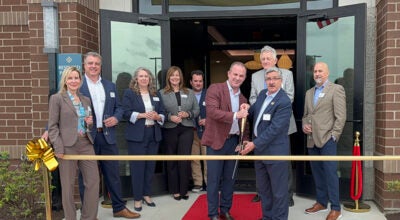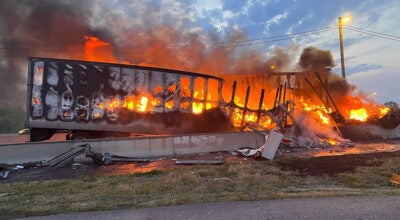Pruden graduates first M&S class
Published 8:52 pm Tuesday, June 8, 2010
Some high school students spend their afternoons playing in simulated environments through their video games.
Four students at the Pruden Center, however, have spent their afternoons developing their own simulated environments — whether for modeling a weapon to see its potential effects or a building complete with textures and measurements.
Austin Bolz, Benjamin Teters, Myles Napier and El Williams will be the first students in the area to graduate from high school with a background in modeling and simulation and internship experience with local industry leaders.
“The program was the first of its kind, insofar that it provides a different pathway for students to get into modeling and simulation,” Pruden Center Director Corey McCray said.
“It’s exciting to see our goals for the program coming to fruition. All students are completing their internships, and the companies have expressed interest in continuing to work with the students, and students have expressed a desire to continue their education.”
The Pruden Center’s program allows high school students to enroll in up to 12 credits of community college level courses, and it offers training courses for modeling and simulation support specialists.
Upon completion of the courses and graduating high school, the credits can be applied to an associate’s or bachelor’s degree or be used to help secure an entry-level job in the field.
“It’s a pathway for students to enter the profession as support specialists and earn college credit towards an associate’s, bachelor’s, master’s and Ph.D., while at the same point becoming candidates for immediate employment,” McCray said.
In the program, students learn to use gaming software to create high-dimensional models on a computer and achieve realistic results.
“They’re using training programs to create real-life situations,” said modeling and simulation teacher Josh Burns. “If you put a building or something together wrong in the simulation, it’ll fall apart — just like it would in the real world.”
Skills being taught at the school are the same ones they’ll use in the workplace.
“We’ve been working on doing real-world simulations,” said El Williams, who is interning at Mymic. “It’s like putting military training on a computer. If there’s someone hurt in the field we simulate them getting hurt and then the process of getting them what they need.”
“They did a great job in preparing us for our internships,” said Myles Napier, who in interning at Mymic. “Most of the hard work we’re doing in the field, we got the basics for in the class.”
Because of Suffolk’s prime location as one of the epicenters of modeling and simulation, industry leaders approached the school system with the idea of educating students to perform support duties and spark an interest in pursuing a career in modeling and simulation.
“As an entrepreneurial company, we’ve experienced growth and are looking for new talent,” said Rich Moorman of SimIS. “We’re excited about working with them on developing the program. They’re on the cutting edge, and there’s a lot to be gained by both sides.”
Students at SimIS outlined their own goals, which mentors helped them achieve through various projects, such as installing a gaming engine, which is used to create many commercial video games, and creating buildings and weapons to test their design and effects.
Students at the center have expressed interest in continuing their education in modeling and simulation, and Mymic is maintaining its interns for an extended period of time.
“I’ve loved it,” Napier said. “The internship aspect has been fun. It’s what I really love to do. It’s the only thing I’ve done in school that I haven’t gotten bored with. I’m thankful I’ve had the chance to do it and know it’s what I want to pursue.”






